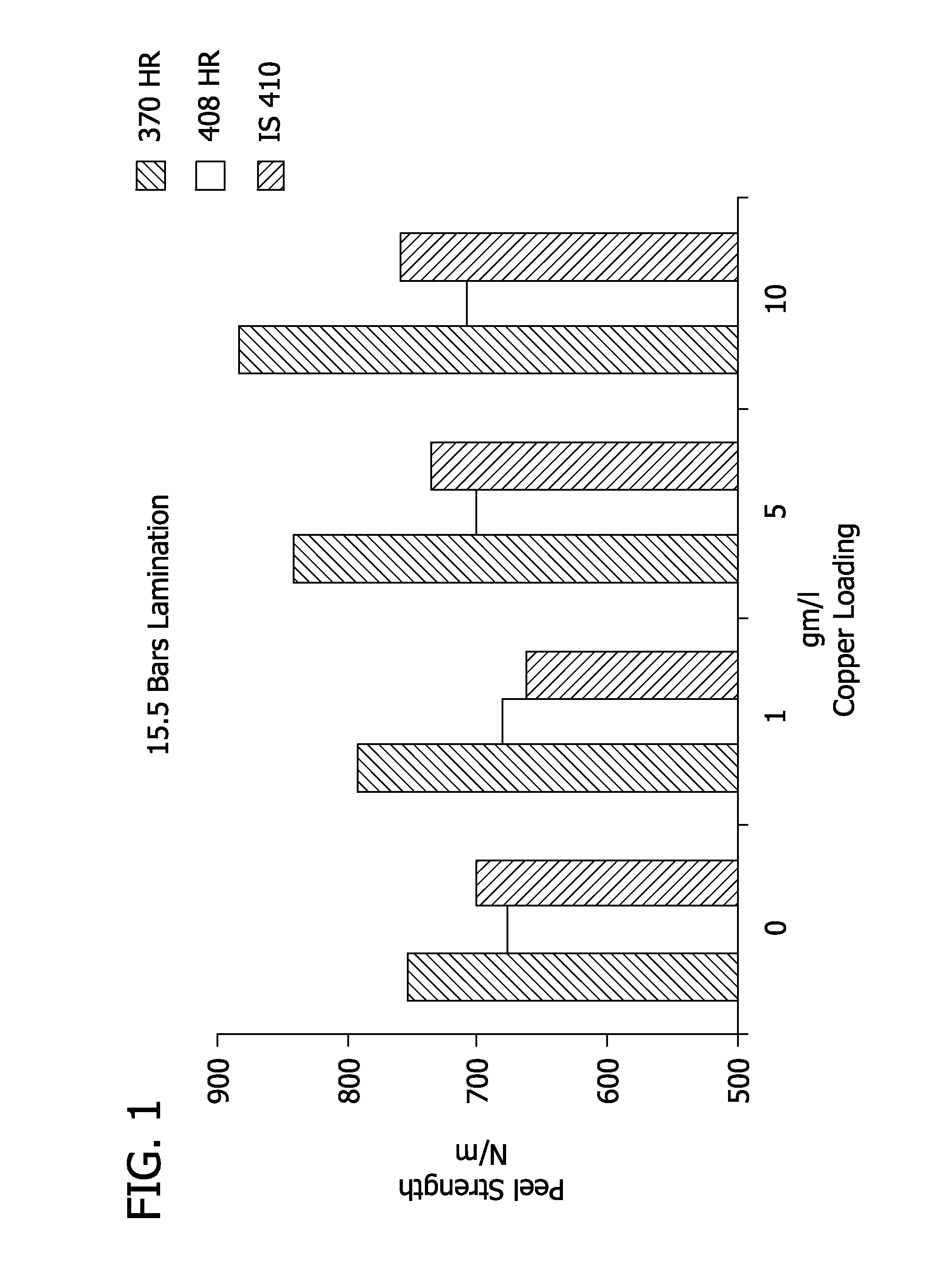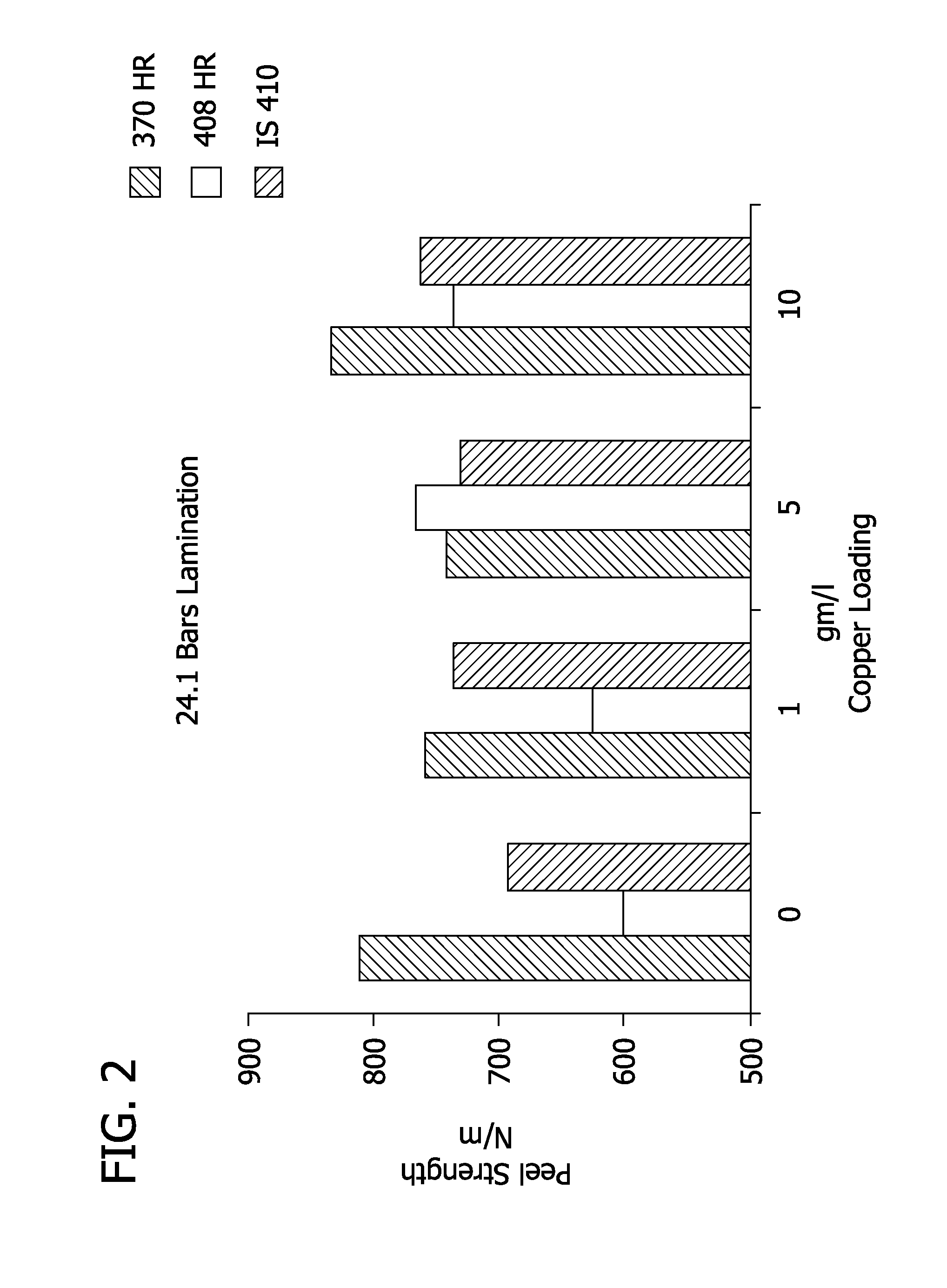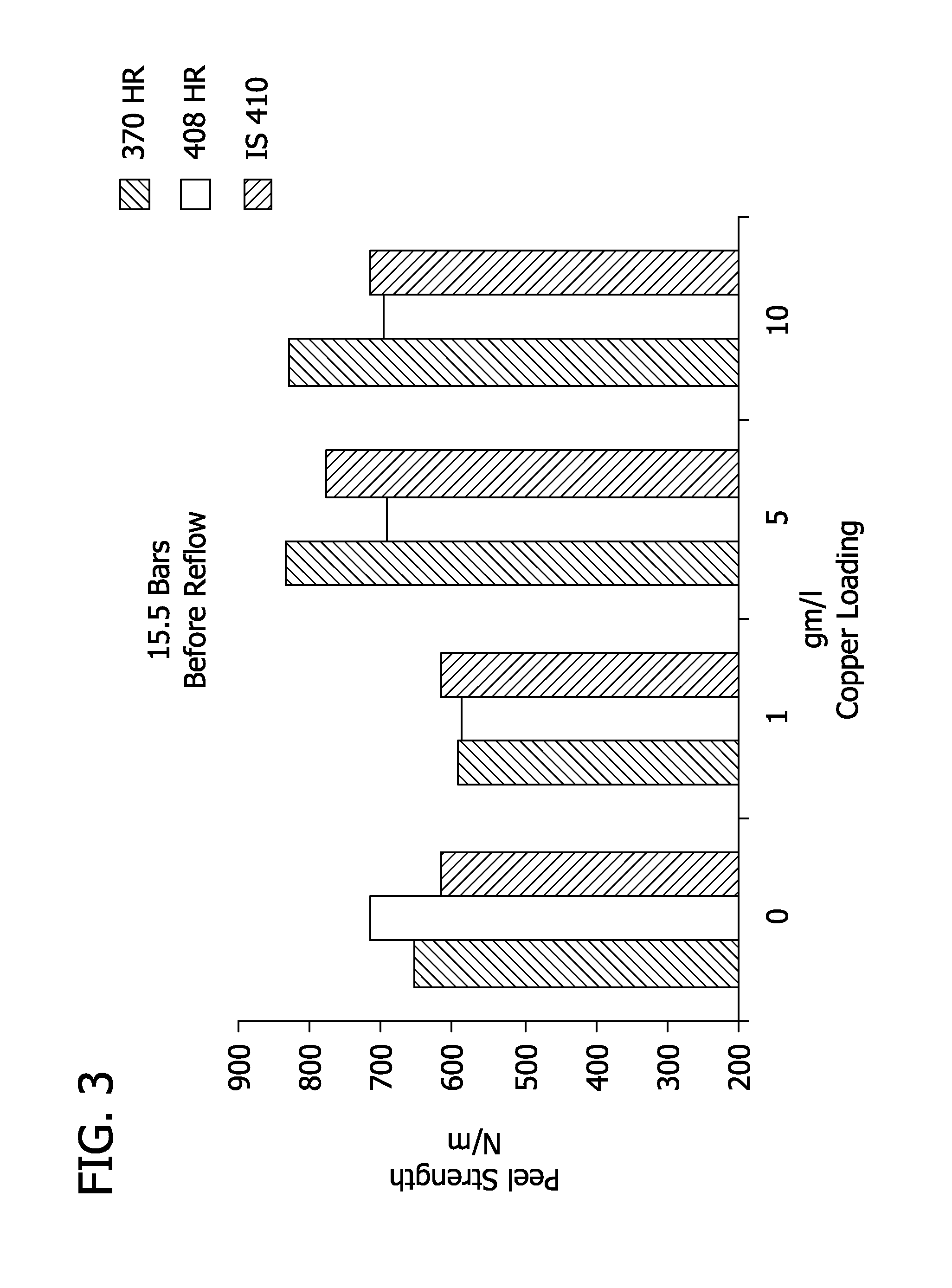Adhesion promotion in printed circuit boards
a printed circuit board and adhesion promotion technology, applied in the direction of superimposed coating process, resistive material coating, liquid/solution decomposition chemical coating, etc., can solve the problems of inability to produce significantly lighter coatings in organometallic conversion coating processes, inability to general inability to meet the requirements of uniform color of organometallic conversion coatings, etc., to achieve the effect of enhancing adhesion
- Summary
- Abstract
- Description
- Claims
- Application Information
AI Technical Summary
Benefits of technology
Problems solved by technology
Method used
Image
Examples
example 1
Control Adhesion Promotion Process
[0145]Multiple adhesion promotion processes were carried out on test copper coupons using commercially available microetchant, cleaner, and adhesion promotion compositions. These processes, designated A0S, were control processes and were carried out in order to provide comparative data for peel strength, conversion coating appearance, and number of solder dip cycles to delamination.
[0146]The adhesion promotion processes were carried out on three sets of 1″ (25.4 mm) by 2″ (50.8 mm) copper coupons according to the following protocol:[0147]1. Contact the surfaces of copper coupons with micro-etchant Enthone® PC-7077 (40-60% concentration, available from Enthone Inc.) by immersion or spraying the coupons in or with the microetchant composition for 30 to 45 seconds at a solution temperature between of 27° C.±3° C.PC-7077 is a conventional micro-etchant that contains Na persulfate, Na phenolsulfate and sulfuric acid.
MAKE-UP100 GALS.PC 7077 NON-FLUORIDEAM...
example 2
Control Adhesion Promotion Process
[0155]Multiple adhesion promotion processes were carried out on test copper coupons using commercially available microetchant, cleaner, and adhesion promotion compositions. These processes, designated A0, were control processes and were carried out in order to provide comparative data for peel strength, conversion coating appearance, and number of solder dip cycles to delamination. The A0 control processes were carried out in a similar manner to the A0S control processes of Example 1, except that the chloride ion concentration of the adhesion promotion composition was increased to between about 85 and about 95 ppm.
[0156]The adhesion promotion processes were carried out on three sets of 1″ (25.4 mm) by 2″ (50.8 mm) copper coupons according to the following protocol:[0157]1. Contact the surfaces of three copper coupons with microetchant Enthone® PC-7077 (40-60% concentration, available from Enthone Inc.) by immersion or spraying the coupons in or with...
example 3
Novel Conditioning Step Followed by Adhesion Promotion Process
[0167]Multiple adhesion promotion processes were carried out on test copper coupons using commercially available microetchant, cleaner, and adhesion promotion compositions. These processes, designated A1, were control processes and were carried out in order to provide comparative data for peel strength, conversion coating appearance, and number of solder dip cycles to delamination. The A1 control processes were carried out in a similar manner to the A0 control processes of Example 2, except that the copper coupons were contacted with a pre-dip composition prior to contact with the adhesion promotion composition.
[0168]The adhesion promotion processes were carried out on three sets of 1″ (25.4 mm) by 2″ (50.8 mm) copper coupons according to the following protocol:[0169]1. Contact the surfaces of three copper coupons with microetchant Enthone® PC-7077 (40-60% concentration, available from Enthone Inc.) by immersion or sprayi...
PUM
| Property | Measurement | Unit |
|---|---|---|
| concentration | aaaaa | aaaaa |
| pressures | aaaaa | aaaaa |
| pressures | aaaaa | aaaaa |
Abstract
Description
Claims
Application Information
 Login to View More
Login to View More - R&D
- Intellectual Property
- Life Sciences
- Materials
- Tech Scout
- Unparalleled Data Quality
- Higher Quality Content
- 60% Fewer Hallucinations
Browse by: Latest US Patents, China's latest patents, Technical Efficacy Thesaurus, Application Domain, Technology Topic, Popular Technical Reports.
© 2025 PatSnap. All rights reserved.Legal|Privacy policy|Modern Slavery Act Transparency Statement|Sitemap|About US| Contact US: help@patsnap.com



